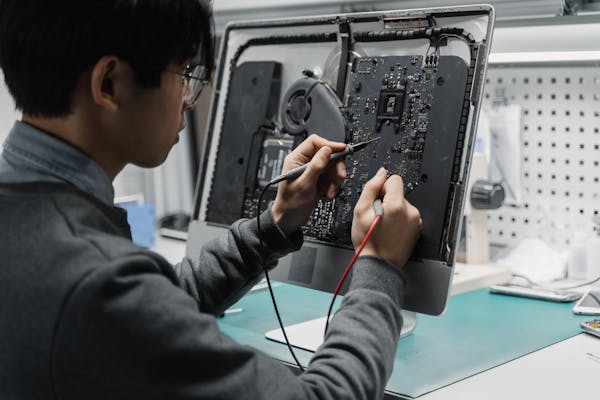Third party maintenance (TPM) transforms IT support by extending hardware lifespan beyond original manufacturer limits. It offers cost savings of up to 70% compared to OEM services, while providing flexible, expert assistance that reduces downtime. By combining multi-vendor support and around-the-clock service, TPM simplifies management and boosts efficiency—making it a compelling alternative for businesses aiming to optimize IT investments without compromising reliability.
Core Definition and Essential Benefits of Third Party Maintenance (TPM)
Third Party Maintenance (TPM) describes support and service options provided by independent companies for IT hardware after the manufacturer’s (OEM) warranty expires. You can view clear details about how leading companies approach these solutions on this page: https://evernex.com/data-center-third-party-maintenance/. TPM providers step in once manufacturers suggest equipment retirement, continuing service for storage, servers, and network infrastructure across numerous brands. These specialists typically support devices like Dell, IBM, Cisco, and HPE, offering tailored agreements that extend hardware life long after official support has ended.
Have you seen this : Unlock savings and ease your operations with third-party maintenance services
Key advantages drive the growing popularity of third party hardware maintenance services. Cost savings with third party support are substantial—businesses regularly report up to 70% savings over OEM contracts. Instead of being forced to upgrade hardware at the end of its official service life, organizations can keep proven systems running reliably. TPM contracts also equip businesses to consolidate support for mixed-brand environments. This means one point of contact, one contract, and far less administrative overhead for IT teams juggling multi-vendor hardware.
TPM differs from OEM maintenance in vital ways. OEMs often increase prices as hardware ages and restrict service to their own products. Third party maintenance providers, by contrast, extend competitive pricing over time, create multi-vendor hardware maintenance contracts, and help avoid vendor lock-in. This flexibility allows companies to develop robust third party data center maintenance strategies and mitigate unnecessary risks, maximizing both value and uptime.
Also to read : Unlocking productivity: your guide to ai personal assistants
How Third Party Maintenance Works: Services, SLAs, and Operational Flexibility
Coverage scope: supported equipment, legacy and EOSL hardware, and supported brands
Third party hardware maintenance services routinely support a wide range of equipment, including servers, storage arrays, and network devices from common hardware brands serviced by third party providers like IBM, Cisco, Dell, and HPE. Service contracts often extend coverage for legacy equipment and systems designated as End of Service Life (EOSL), ensuring accessible support well beyond manufacturer warranties. Typical components covered in independent maintenance agreements include hardware diagnostics, part replacement, firmware updates, and device configuration, with a specific emphasis on maintaining both new and aging infrastructures.
Structure of TPM service contracts: bespoke SLAs, on-site and remote support options, global multi-vendor coverage
Third party maintenance agreements and SLAs are tailored to maximize uptime with third party server maintenance, especially through flexible, bespoke service level options with independent maintenance providers. Clients benefit from a single-point-of-contact model covering global multi-vendor environments, including both on-site and remote support, which improves operational efficiency and reduces administrative burden.
Proactive and reactive maintenance services: 24/7 support, remote monitoring, spare part logistics; case studies of uptime improvements
Proactive maintenance by third party providers involves 24/7 support, real-time remote diagnostics, and efficient spare part logistics. Maximizing uptime with third party server maintenance, these services focus on identifying and resolving issues before disruptions occur, minimizing downtime and keeping mission-critical operations running smoothly. Reactive services quickly address and resolve hardware failures, leveraging global networks and supply chains for rapid intervention.
Making the Switch: Evaluation, Risks, and Industry Insight
Evaluation Criteria for Third Party Maintenance Vendors
When evaluating third party maintenance vendors, focus on their vendor expertise, global coverage, relevant certifications, clearly defined SLAs, and robust customer support. Leading independent maintenance companies often demonstrate multi-vendor hardware maintenance contracts proficiency, allowing seamless service for enterprise infrastructure and legacy equipment. Service level options with independent maintenance providers reflect their capacity for rapid response and global coverage by independent maintenance companies. Accreditation bodies and Gartner analysis of independent maintenance providers can further validate legitimacy and best practices.
Addressing Concerns and Mitigating Risks
Common challenges in transitioning to third party maintenance include fear of warranty implications and concerns about access to manufacturer tools. The impact of third party maintenance on service continuity is mitigated through rigorous SLAs, comprehensive spare parts management, and proactive maintenance by third party providers. Compliance considerations in third party contracts address regulatory obligations, while proactive monitoring supports data center resiliency.
Industry Trends and Analyst Insights
Gartner analysis of independent maintenance providers highlights environmental sustainability benefits of hardware lifecycle extension. The cost comparison: OEM vs third party hardware service consistently favors third party support for organizations focused on TCO reduction. Industry best practices for third party maintenance encourage customized SLAs and risk mitigation with third party hardware maintenance for sustainable, resilient IT operations.




